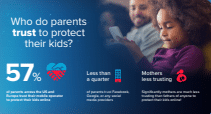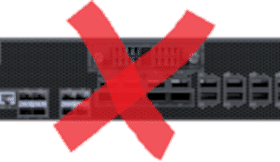Hyperscaling 5G – Webinar with AT&T, Microsoft & Enea
Navigating the Complexity of 5G Hyperscaling: A Multi-Stakeholder Perspective
In a recent webinar hosted by RCR Wireless, industry leaders from AT&T, Enea, and Microsoft convened to discuss the complexities and opportunities in hyperscaling 5G services. The panel featured Vikram Seenappa, Director of Packet Core 4G/5G Control Plane at AT&T, Osvaldo Aldao, VP of Product Management at Enea, and Paul Brittain, Principal Product Manager for Azure for Operators at Microsoft.
The full webinar can be accessed here.
Key Insights
- Collaborative Transformation: Hyperscaling 5G is a team effort.
- Data-Driven Efficiency: A robust data management strategy is essential.
- Uncompromising Standards: Security, performance, and agility are non-negotiable.
- Open Architectures: Multi-vendor APIs ensure long-term viability.
- Long-Term Strategy: Comprehensive planning is crucial for sustainable hyperscaling.
Collaborative transformation: more than just infrastructure
Transformation in the telecom sector is not just about upgrading infrastructure; it’s a holistic process that involves data, partnerships, operations, and strategic network direction. Paul Brittain of Microsoft emphasized that Azure Nexus for Operators is an operational service, not merely a provision of compute resources. It aims to offer scale, performance, security, and agility, all of which are vital for next-generation solutions.
Data-driven efficiency: the catalyst for scale
Osvaldo Aldao from Enea pointed out that telecom environments often have different vendors in various domains. Breaking the data barrier across these domains can lead to faster innovation cycles and greater flexibility for new services. Effective data management is crucial for organizing, storing, and accessing both permanent and dynamic information, such as user and network data, across different network domains.
Uncompromising standards: the network demands it
Performance and latency are critical factors that cannot be compromised in the 5G network. Enea discussed the dimension of latency in data layer functions, emphasizing that one connection could generate ten times more traffic in read/writes in the backhaul. This makes latency an even more stringent requirement for data layer functions, especially when considering the demands of users wherever they may be.
Open architectures: the future is interoperable
The panel was unanimous in agreeing that open APIs are not just a fleeting trend but a long-term necessity for achieving analytics, operations, and orchestration that can adapt to future needs.
Osvaldo Aldao from Enea highlighted the need for new interoperability standards, rigorous testing, and industry-wide collaboration to ensure a successful transformation. This is particularly crucial as telecom operators increasingly adopt a multi-vendor approach, which brings its own set of challenges and opportunities.
From the hyperscaler’s perspective, AT&T, which serves as a partner and an integrator, emphasized that open APIs at all levels will provide significant benefits, not just in analytics but also in operations and orchestration. This starts with data and its access but extends to how containerized functions perform in a network environment. Microsoft added another layer to the discussion by emphasizing AI operational modeling as a developing theme. This is fed by more open access to data, which allows for real-time insights and streamlined processes. Looking into the future, AT&T observed that open APIs enable the next generation of applications that connect the network to the cloud, expanding on new classes of service like connected fleet management.
The panel agreed that a new generation of “software thinking” is essential for hyperscaling 5G services. Open architectures and interoperability are not just about current efficiencies but are crucial for future-proofing networks against rapidly evolving demands and technologies.
Long-term strategy: planning for sustainability
AT&T highlighted the logistical and diverse challenges of hyperscaling a network the size of theirs. A phased approach is essential, and each stage of software and its integration must be rigorously tested. The managed service aspect of this approach was emphasized, where CI/CD is not just about Day 0 but also about Day N, accounting for multiple deployments and versions from various vendors.
Hyperscaling 5G services is a complex endeavor that requires a multi-faceted approach, involving operations, infrastructure, data management, and more. With practical governance, automation, and adherence to open APIs, it is possible to build a sustainable architecture step-by-step.
For a deeper dive into these insights, you can watch the full webinar here.
Enea’s Stratum Data Layer here




